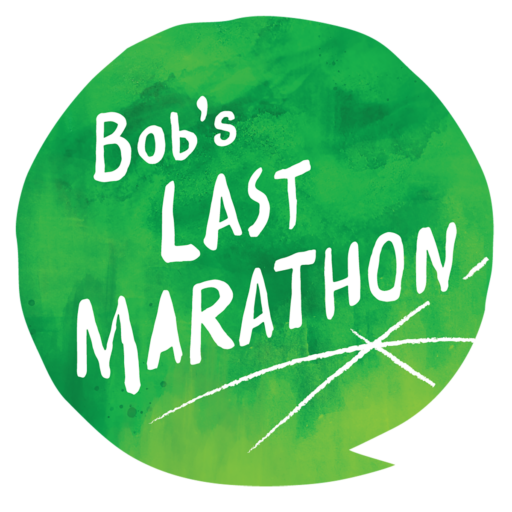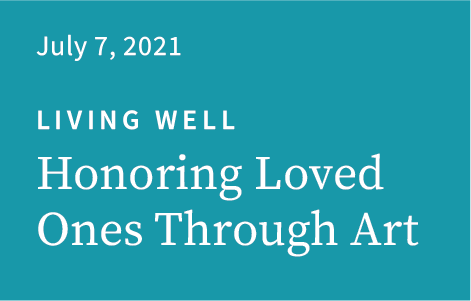Transcript
Honoring Loved Ones Through Art
When my son, Noah, was in fourth grade, he made a sculpture in art class. He worked on it for weeks, giving me frequent updates on the different stages of working with clay and waiting patiently for his turn at the kiln. When I asked what he was sculpting, Noah only replied, “You’ll see when it’s ready.”
The big reveal came on the night of the Spring Art Show. The school was alive with chatting parents and proud kids eager to show off their creativity. We wound our way through tables of paintings, jewelry, and crafts, each encircled by a posse of fans exclaiming, “I love it!” or “How did you come up with this?” I was reminded how love has the power to raise even a simple school project to the level of high art.
We arrived at a long table where a dozen little figures sat shining under the display lights. They were, as Noah explained, Pueblo storytellers, showing the tradition of passing wisdom from generation to generation. I knew Noah’s sculpture right away. It was an adult figure, his mouth rounded in the circle of a storyteller, holding a smiling child figure in his lap. “It’s me and Dad,” he said. I hugged Noah quickly to hide my tears. Grief is like that sometimes. So sneaky, and so close. “It’s perfect,” I said. “Dad would’ve loved it.” Noah went on to say he’d also wanted to make a sculpture of our two cats, but didn’t have time. The missing cats were a welcome distraction from what was really missing.
His father had passed away six years before this sculpture was crafted, at the age of 33. In the years before his passing, Mike lived with frontotemporal dementia, or FTD. He could not tell Noah stories, or hold him in his lap.
I saw that Noah’s art was an expression of his longing, a way to connect with his dad. I wondered whether Noah remembered another time his creativity built a bridge to bring them together.
In the early, mild stage of Mike’s dementia, the idea of art enrichment didn’t come up. As our lives unraveled at an overwhelming speed, each day felt like chaos.
But when Mike progressed into moderate-stage dementia, I began looking for ways to give his days more purpose. He became a participant in a local adult day program, which gave me respite while offering Mike care, social connections, engagement with music, and exposure to art.
My hope was that art might be an enjoyable way for Mike to grasp his experience. But my expectations were too high. As it turned out, Mike was less interested in making art than putting art supplies in his mouth to explore their texture with his tongue. Rather than battle with Mike, the staff took him on walks with a therapy dog during art time. I was happy to sacrifice the joy of seeing Mike’s art for less worry over him swallowing paint.
As time passed, and Mike’s brain succumbed to the devastation of FTD, he needed more help in his daily activities. He was unable to meaningfully answer questions about himself or take part in conversations.
I made the difficult decision to move him to a local skilled nursing facility.
With a young child to raise, I couldn’t see Mike every day. Thinking about Mike without me, surrounded by people who didn’t know him, I decided it was critically important that I fill in the blanks with more than just the facts, so people around him would know his story. The data in his resident profile couldn’t begin to convey all the beautiful things that made Mike Mike.
In college, Mike was known as “Big Mike.” True, he was tall and broad, but it was his warm and outgoing personality that earned him the nickname. People who knew and loved Mike often commented on how engaging and gregarious he was. His easy laugh. His enthusiasm for talking and connecting with others. Mike spoke openly about how much he loved me, and how excited he was that we would become parents together.
I wanted people stepping into Mike’s space to connect with this vibrancy. I wanted people to see that Mike was more than his dementia. I wanted them to connect with him as a father, a husband, a son, and a friend. To see him as a whole person, despite all that he had lost. When Mike could no longer use his voice to communicate, we needed a new medium to show who he was without speaking a word.
I do not consider myself an artist. I love photography and have taken classes, spending hours in a darkroom. One of Mike’s last gifts to me, the month before Noah was born, was a Nikon D40 digital camera. This became my medium for telling Mike’s story.
Of course, Noah was the star. I decorated the walls of Mike’s room with poster-sized snapshots, each one capturing a moment in Noah’s life. Beautiful portraits of Noah exploring a hermit crab on the beach, beaming with mischief after a run through the sprinklers or with quiet concentration as he hung an ornament on the Christmas tree.
Noah expanded on the photographs by creating elaborate collages with glitter, stickers, and markers. I painted his bare toddler feet and let him walk across each masterpiece, a stamp in time to mark the moment.
It brought me comfort to know that no matter where Mike looked in his room, he would see reminders of our love story and the little life we created together.
So many years after he sculpted it, Noah’s art project had become much more than just an art project. And even more than an expression of his grief, Noah’s work touched on how the ability to tell our story is central to our personhood. The photos and toddler collages told Mike’s story. They were as critical to Mike’s well-being as his care plan.
I know that this desire is shared by many people with dementia and their caregivers, who can take the same route I did, using a creative medium to convey the importance of a whole person and a life lived.
For the person with dementia, it can take the form of
a new skill, adapted to any stage of the disease, or an iteration of a lifelong endeavor. Either way, art offers the opportunity for creation even while experiencing loss.
During Mike’s care, it was important for me to hear his voice through my expression of his story. Today, it is important to Noah.
It’s been eight years since Mike’s passing, and two years since Noah created his sculpture. He has grown into a precocious middle-schooler. In 2019, he was invited to participate in a patient and caregiver art exhibit and gala fundraiser to benefit the Massachusetts General Hospital Frontotemporal Disorders Unit. The evening featured live music, scientific talks, and lots of dancing. The art exhibit honored Featured Artists, individuals whose lives were touched by dementia.
Noah submitted Storyteller as his signature piece. I watched from afar as Noah stood beside his sculpture. He looked tall to me, and confident, wearing his first tuxedo. I thought of him creating the sculpture, shaping each face and hand, carefully placing the child on the parent’s lap, ready and alert for what would come next.
I watched Noah greet each guest and answer questions about how his dad inspired this work. Noah had become the storyteller. And through art, he was honoring Mike’s life. It was probably not his intention when he made the sculpture, but it was proof that a connection from the past had found a way to our present, keeping the stories alive.
Katherine Diane Brandt
Director of Caregiver Support Services and Public Relations
Massachusetts General Hospital Frontotemporal Disorders Unit
www.loveisoutthereftd.org
www.ftd-boston.org

